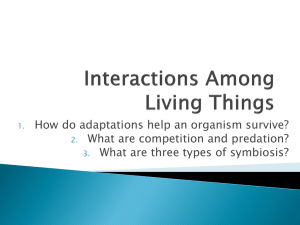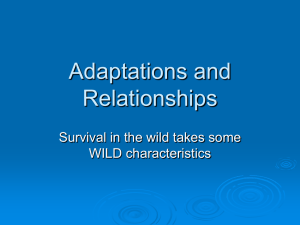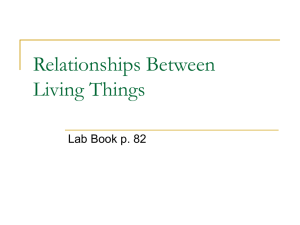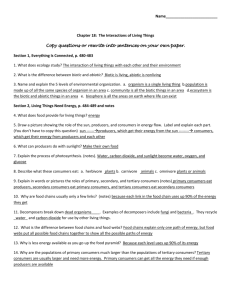Populations and Communities III. Interactions among Living Things
advertisement
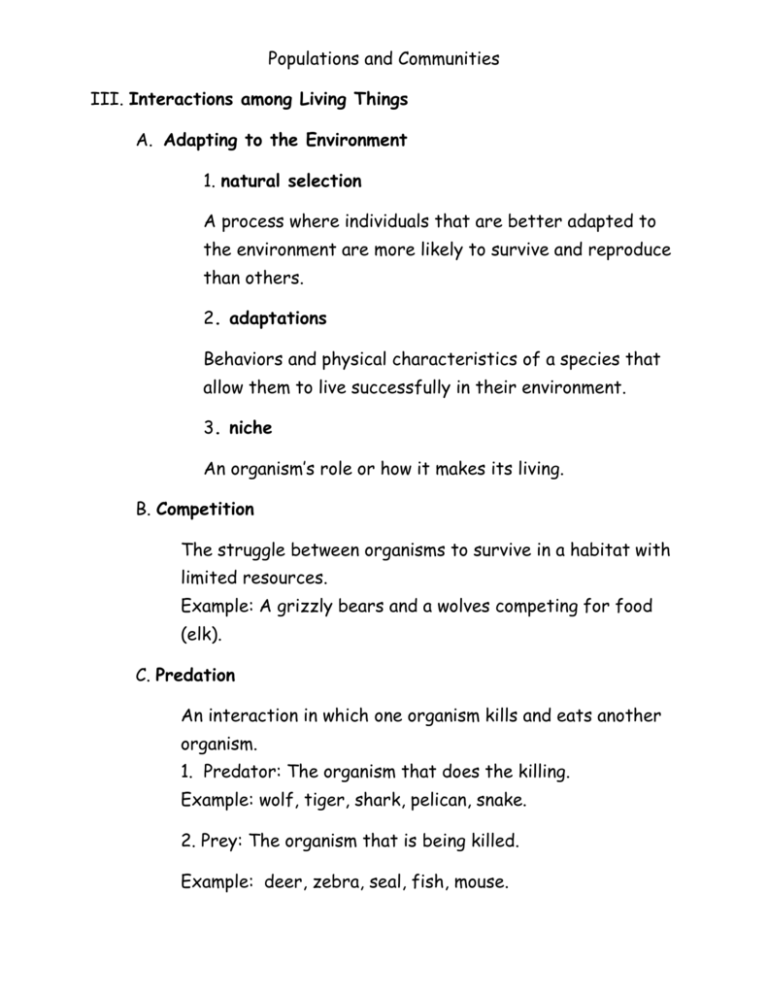
Populations and Communities III. Interactions among Living Things A. Adapting to the Environment 1. natural selection A process where individuals that are better adapted to the environment are more likely to survive and reproduce than others. 2. adaptations Behaviors and physical characteristics of a species that allow them to live successfully in their environment. 3. niche An organism’s role or how it makes its living. B. Competition The struggle between organisms to survive in a habitat with limited resources. Example: A grizzly bears and a wolves competing for food (elk). C. Predation An interaction in which one organism kills and eats another organism. 1. Predator: The organism that does the killing. Example: wolf, tiger, shark, pelican, snake. 2. Prey: The organism that is being killed. Example: deer, zebra, seal, fish, mouse. a. Predator Adaptation: Characteristics that help predators catch and kill their prey. Example: Grizzly bear has sharp teeth and claws for tearing flesh. b. Prey Adaptation: Characteristics that help prey avoid being caught and eaten. Example: Deer have long legs which make them fast and agile to escape a predator. c. The Effect of Predation on Population Size Predation has an effect on population size. If predators are very effective at hunting their prey, the result is often a decrease in the size of the prey population. But this decrease in the prey populations will then affect the predator population. D. Symbiosis Is a close relationship between two species that benefits at least one species. 1. Mutualism A symbiotic relationship where both species benefit. Example: Bacteria that lives in our stomach. The bacteria help us break down food and they get a place to live and food. 2. Commensalism A symbiotic relationship where one species benefits and the other is neither harmed nor helped. Example: The red-tailed hawk living in a saguaro plant. The hawk gets a place to build nest and the plant is unharmed. 3. Parasitism A symbiotic relationship where one organism lives on or inside another organism and harms it. a. Parasite The organism that benefits and lives in or on the other organism. b. Host The organism that is harmed and lived on or in. Example: A tick feeding off a dog. The tick drinks the blood from the dog and harms it.

